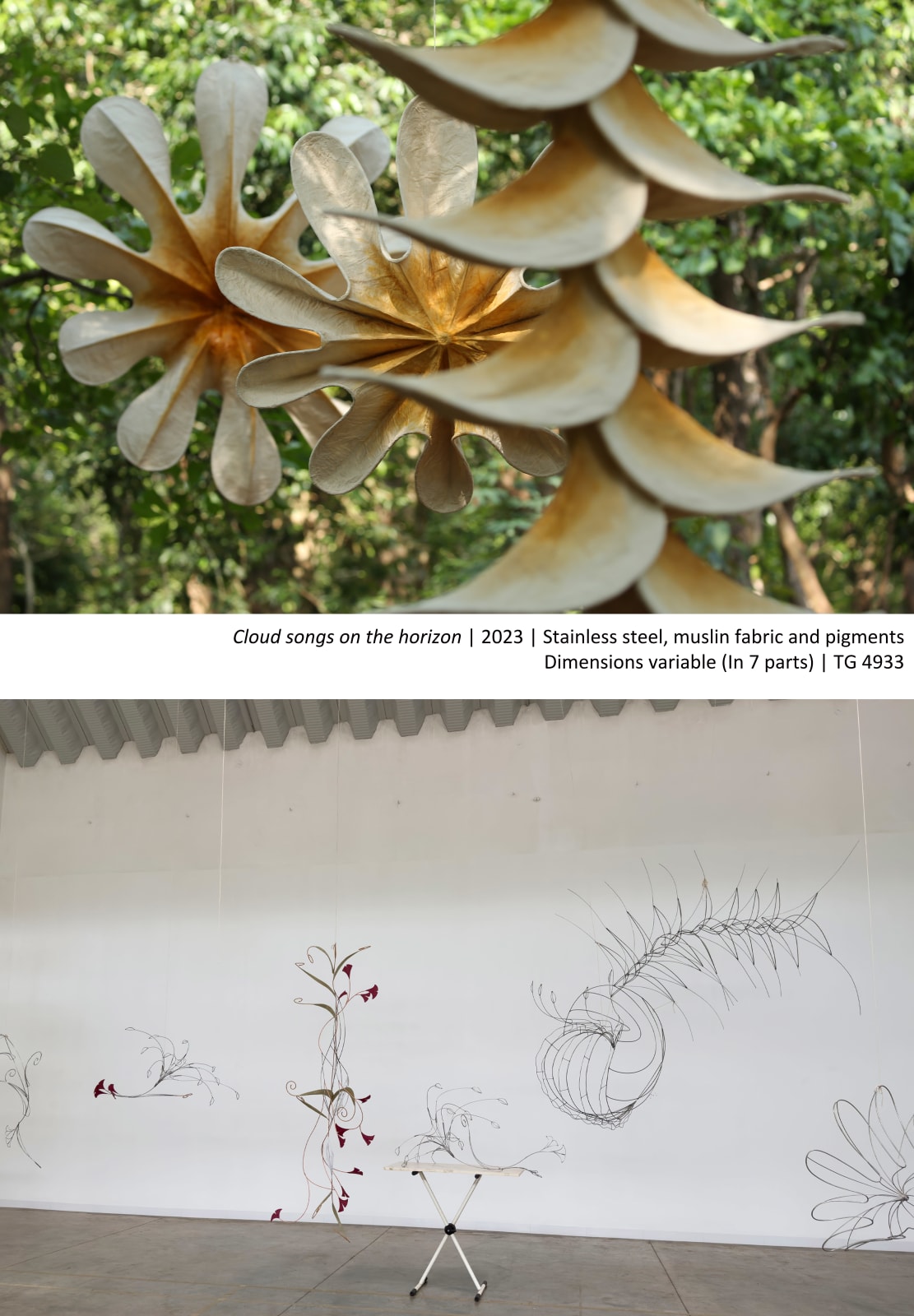
Interview: Inside Sculptor Ranjani Shettar’s Karnataka Studio
Celebrated Indian sculptor, Ranjani Shettar, adeptly blends elements from the natural world with industrial components to craft expansive and immersive installations. She works with materials including beeswax, wood, organic dyes, vegetable pastes, lacquer, steel and cloth, creating environments inspired by her observations of the increasingly threatened ecologies of rural India. Living and working in Karnataka, Shettar’s works are in many prestigious museum collections and have been the subject of several solo presentations, including recently at The Metropolitan Museum of Art in New York. Cloud songs on the horizon, the artist’s first major institutional show in Europe, will feature a series of new, large-scale suspended sculptures across the entirety of the Barbican Conservatory’s 23,000 square foot space. A tropical oasis in the heart of London, the Conservatory is home to a vibrant mix of 1,500 species of plants from across the world. Shettar’s sculptures, currently in production in her studio in South India, are each meticulously handcrafted by the artist. To learn more about her practice and what we can expect from the upcoming presentation, Something Curated takes a look.
Something Curated: Can you give us some insight into your background and journey to artmaking?
Ranjani Shettar: My journey into artmaking has been an organic process. I was always interested in art for as long as I can remember with early encouragement from my family, especially my father. Being in an art college, I was exposed to different mediums and ways of artmaking. Early on at art school I realised my interests and explorations were more aligned with three dimensions than two and I started exploring those ideas and translating them into tangible materials. That process over decades has allowed me to discover the potential of materials, create new forms, and it is still continuing.
SC: Could you expand on your approach to using materials; what interests you in adapting techniques from traditional crafts?
RS: I feel material science and aesthetics is something that is well understood in traditional crafts. They are usually developed in tandem with the geography and naturally available materials in a particular location and have a certain economy to them, as in circular economy, which in recent times has come into focus. This circular economy is innate to traditional crafts. Since the craftsmen, usually over generations have spent considerable time perfecting their craft, there is a kind of maturity to the handling of their materials that is hard to find in more recent and new ones. We build on the previous generation’s understanding of things in all aspects of life and I find relevance and resonance in traditional crafts for my artmaking process.
SC: What is the thinking behind your upcoming presentation, Cloud songs on the horizon, at the Barbican?
RS: My explorations of form, colour and the dynamics between multiple forms within a composition continue here. The Conservatory presentation allowed me to think of scale in a totally different manner and also the relationship between light and surface. As usually my installations have been relatively permeable, to light and sight, here in the new works I have played with large solid surfaces and colour to add a boldness.
SC: How have you approached utilising the Conservatory as a site of display?
RS: The Conservatory is as far from a neutral white space as possible. It became a catalyst in my thinking process. It is an unexpected tropical jungle in the middle of urbanity. I love how much that space is cherished by the locals. It felt apt to show my sculptures in a lush surrounding; it’s something that hasn’t happened much in the past. The space seemed huge in the beginning, and I took the time to understand and familiarise myself with it. I started understanding how it could lend itself to viewing the artworks through different vantage points. Often when I am working in my studio, I think about how wonderful it would be if my audience could experience my artworks from every angle that I get to see them.
I might be under them or above them on a ladder. It is generally not an option for the viewer. However, in this space it is possible to have the artworks be seen from multiple perspectives. Confronting the large scale already filled with nature, I embarked on creating five projects, placing each in a specific space and away from the others to create a more intimate experience for each. They slowly reveal themselves as one journey’s through the conservatory. I have often spoken of artworks coming off the pedestals and occupying the same space as us, and becoming one with the audience. The Conservatory has allowed me to take that even further.
SC: And what are you currently reading?
RS: I am reading this amazing book In the Shadow of Freedom: Three Lives in Hitler’s Germany and Gandhi’s India by Laxmi Tendulkar Dhaul. It is an unexpected love story that unfolds in Germany and continues in India. I am loving how candid Laxmi is about this triangular love story, involving struggles, sacrifices, passion and her parents coming together to fight for independence.
Ranjani Shettar: Cloud songs on the horizon opens on 10 September 2023 at the Barbican Conservatory.
View More on Something Curated